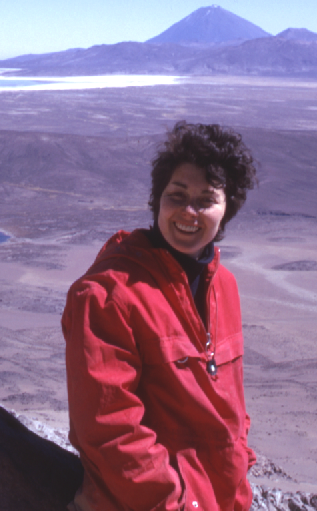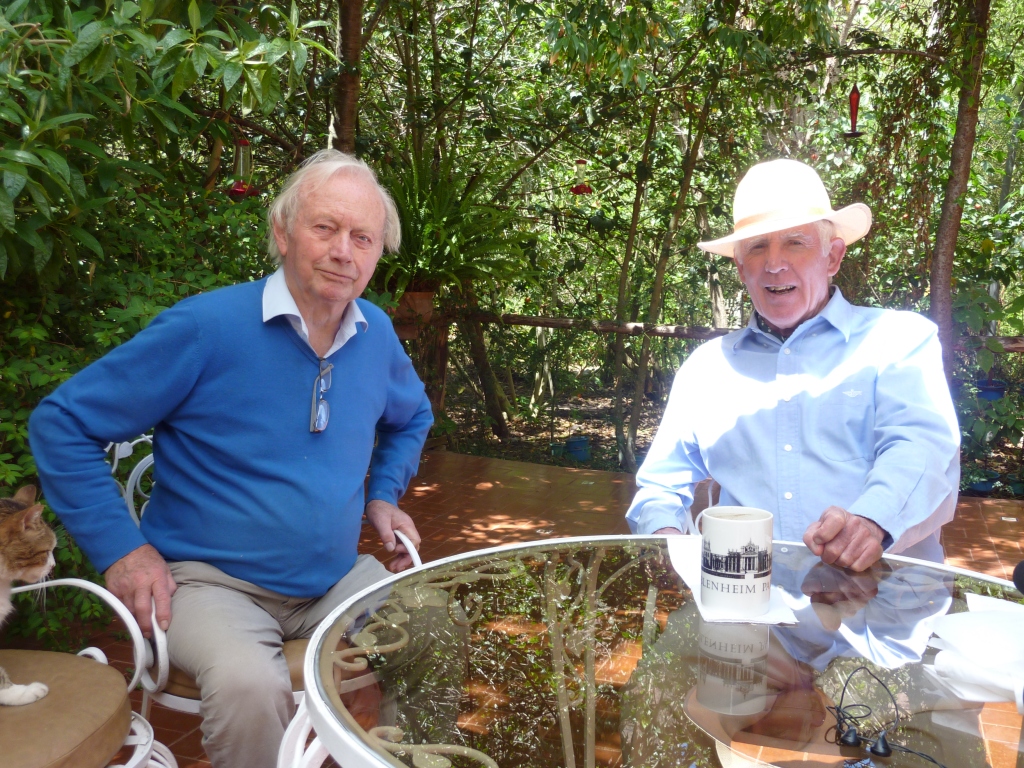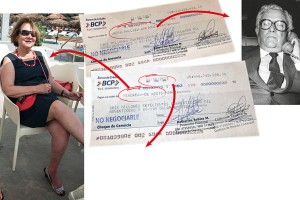By Nicholas Asheshov
As seems to happen every 500 years, the Vilcabamba is on the move. Once the redoubt of the last Incas, this stand-alone world, the size of a small European country, of deep jungle valleys and aloof cordilleras in Peru’s south-eastern Andes, has become a home to drug runners, and their clandestine airstrips, terrorists, Texas oilmen, Chinese and Italian electricity engineers and, clinging to its eastern gorges, a flood of a million international tourists.
The oilmen are new, on the edge of the Vilcabamba in the Amazon lowlands at Camisea, on the Urubamba. Their pipelines, essential to 21st-century Peru, run west to Lima across the northern Vilcabamba, the Ayacucho highlands. What is new today is there are more, a lot more, of each group, and they are crowding closer together.
The Sendero terrorists work with the drug people, and they also demand and get protection money from the oilmen, kidnaping pipeline workers, killing soldiers and policemen, and dynamiting helicopters. Tourists can no longer feel safe off the beaten track. But even the most dramatic of these, say the shooting down last year of a police helicopter, piloted by a brave woman captain, is a blip compared to the epic violence and calculated cruelty of the events in Vilcabamba half a millennium ago, when young Manco Inca and Kura Ocllo, his beautiful and brilliant sister-wife, were separately tortured and assassinated. Likewise, Spanish friars just as blameless were unbearably tortured by the Vilcabamba Incas for days before dying dreadful, martyrs’ deaths.
The Pizarros and finally Viceroy Toledo in 1572 sent in savage Castilian bounty hunters, who ran Inca Tupac Amaru to earth after a chase through the jungle. Once captured, he was dragged up to Cuzco and summarily beheaded in the Plaza de Armas. By then, the plundering of Cuzco, Vilcabamba and the rest of of Peru had reached, as it had in Mexico, a level of cruelty and greed with, in David Graeber’s phrase, “mythical proportions” seen never before or since. The campaigns in Mexico and Peru were “some of the most ingenious, ruthless, brilliant and utterly dishonourable ever recorded,” he says.
“If the Incas had managed to hold out in Vilcabamba until today,” muses the English Inca authority, John Hemming, “they might be an independent kingdom still, a member of the United Nations.”
The story of the ferocity of the conquest of this culturally distinguished Shangri-La is told in two recent books, translated into Spanish. This is Kim MacQuarrie’s The Last Days of the Incas. Movingly for many Peruvians, FX announced its plan to turn ‘Last Days’ into a 12-part series, describing it with modest Hollywood hyperbole as “one of the world’s great rebellions, led by a couple of teenagers.” That was in 2013, with nothing, since reported in the Hollywood trades publications. The other title is Forgotten Vilcabamba: Final Stronghold of the Incas by Vincent R. Lee, and there’s no hyperbole here. It is one of the great books of exploration in South America, which appeared first in 2000. Separately and together, these two books contain gripping accounts of the events of the last four decades (1532-1572) of the Inca Empire as well as super stories of the machete-swinging exploration that has added a new dimension of blood-stained reality to the dusty, tantalisingly brief and inevitably contradictory archives of the conquest.
In the 1980s, Vincent Lee, an energetic Wyoming architect, opened an entirely new window on the Vilcabamba, and on the wider story of the Inca Empire, with a trio of expeditions aimed at sorting out the ruins and remains of the last, desperate days of the Incas. The Shining Path revolt had begun and few tourists ventured beyond Machu Picchu. Likewise, cocaine was not yet an important part of the picture. The Sendero Luminoso terrorists, known then and now as terrucos, were still a low-grade bunch in the Vilcabamba compared with the tough activists in Ayacucho, Puno and elsewhere. But they and small nervous bands of soldiers nevertheless provide a rumbling background to Lee’s story of tough but good-humoured travel in difficult, spell-bindingly beautiful and ancient country. Lee was trying to solve sets of multi-dimensional archaeological puzzles while fighting rain, cold, heat, bugs and the nagging lack of coffee and pisco.
Lee’s descriptions of each step along crumbling paths merge well with the chronicle accounts written four centuries ago into an always-gripping saga. We slog with him through jungle rivers and over slippery log bridges as he tries to piece together an historical jigsaw of hidden ruins and both old and new accounts of who did what to whom and where. Vilcabamba today is the single most active Sendero zone west of the Apurimac and the world’s single biggest cocaine producer.
The DEA and the Pentagon are setting up a drone ops centre there, according to the Cuzco rumour mill, a reliable source of misinformation for close on five centuries. Cheek by jowl, only a few dozens of miles away, across Vilcabamba’s jungle canyons and frozen cordilleras, on its the eastern, Urubamba side, three thousand international tourists a day brave 18 hours of ancient, narrow-gauge train shuttles to reach Machu Picchu, tourism’s holy grail. These do not always include U.S. nationals. A decade ago, the State Department issued an unusually silly edict prohibiting their diplomats from visiting and warning all their citizens they might be kidnapped and held to ransom in exchange for release of Abimael Guzman, the Sendero version of Mao Tse Tung, sitting in a Callao jail for decades until he died there in 2021.
A modern kidnapping, uncomfortable as it might be, would compare well with what would have happened to hostages 450 years ago. As Lee and MacQuarrie relate, as happened to the ill-fated Padre Diego Ortiz in 1570, you could have been dragged naked for days and freezing nights by a rope plunged through a hole in your jaw, up cliffs and through icy rivers only to have a sharp stake thrust up through your rectum and out your mouth and left for the crows and buzzards to pick out your eyes and liver. Now as then, coca-laden hillsides were spread across the valleys neighbouring the magnificent palazzos of the Inca grandees: Machu Picchu, Choquequirao Rosaspata and Espíritu Pampa. Gary Ziegler and Kim Mallville’s account of Choquequirao, on the Apurimac side of Vilcabamba, 25 condor miles from Machu Picchu, described this world-class site properly for the first time, including its vast coca-producing terraces.
It is here at Choquequirao, or perhaps at Incahuasi, a perfectly preserved Inca solar observatory perched in a craggy gap at 4,000m described by Lee, that we can best appreciate the noble cultural achievements of three millennia of pre-Columbian Andean civilisation. This was on a par, and in some ways exceeded, the highest achievements of contemporary Eurasia. Whatever, it was not a world of savage underdogs.
In the Vilcabamba can be seen, as nowhere else in South America today, the profound links of these cultures to their natural surroundings, the frozen snows of the godly cordilleras, the fertile and well-watered alpine valleys and the hothouse maelstrom of the Amazonian jungles below. John Leivers, an Australian surf master who spent decades exploring Vilcabamba, often alone, tells me that Manco’s capital at Espíritu Pampa is today off limits because the Sendero have set up one or more bases nearby. Army and police posts a bit further downstream are being strengthened.
He was planning a trek to Espíritu Pampa not long ago and decided instead to visit the remote and spectacular Incahuasi, on its stunning ridge high in the Puncuyoc Mountains. Gene Savoy, the American explorer who was the first, in 1964, to identify Espíritu Pampa as Manco’s lost capital, had been told of the Incahuasi, but never been there. Vince Lee’s party in 1984 was the fourth group of explorers known to have reached the site. In “Forgotten Vilcabamba,” he describes it properly with maps, drawings and photos of its fine stonework and superlative setting. Leivers has GPSed the site and says it is aligned on a solstice line with the great sites of the Sacred Valley. “The Vilcabamba has always been underestimated by history,” Leivers says. A good part of the province is technically an archaeological park under the care of the Ministry of Culture, aka the INC. But the INC has hardly shown its face there and the local alcaldes continually bulldoze the once well-preserved Inca roads to replace them with mud tracks for trucks to spin their wheels in.
Today’s international lawlessness and five-star tinsel is an embarrassing, down-at-heel version of the Vilcabamba of the 15th century when the Incas adapted these great valleys into their vision of the Garden of Eden. It is difficult to think of a handful of more elegantly civilized places in 15th century Europe, Tuscany, perhaps, with Leonardo, Lorenzo Medici, than Machu Picchu and Choquequirao, and a bit further upstream, Ollantaytambo and Pisac, with their thousands of wonderfully sculpted terraces. This was a productive, large-scale society, more ordered and orderly than the raucous mess of medieval and post-medieval Europe. This is what the Spaniards found in 1532, and the gold and silver they looted and carried back to Spain provided the liquidity that financed Europe’s take-off from medieval barbarism into whatever you like to call it today.
The Vilcabamba, with Machu Picchu, Choquequirao, Rosaspata and Espíritu Pampa and a network of towns, villages, warehouses, Class A, B and C stone roads and thousands of flights of agricultural terraces was dramatic then as now but really just a typically well-organized section of the Inca heartland. Machu Picchu was not, as many think of it today, an outlier at the end of the line but at the heart of a major zone extending much further on into the Vilcabamba. But with the arrival of the Spaniards, the Vilcabamba acquired a reputation it retains today, rebellious and lawless. This twist, which sees rapacious conquistadores as respectable pioneers while the Incas are turncoat rebels, is still taught in Peru’s schools. as its local version is in the U.S. and Canada, where the indigenous have been depicted as untrustworthy, unreasonable and, above all, outside the law. Vilcabamba’s two main rivers are the all-powerful Apurimac, the longest of the Amazon’s tributaries, and the Vilcanota-Urubamba, the one that plunges below Machu Picchu.
The Vilcabamba contains two great snow and glacier-covered cordilleras as well as three lesser ranges, great deep jungle valleys, high-plumed waterfalls and 3,000-foot cliffs. In my day, half a century ago, there were no roads to the Vilcabamba either on the Apurimac or the Urubamba side. Hiram Bingham had been there, but no one had followed. A steam train powered by an ancient Baldwin locomotive passed by Machu Picchu once a day on its way to the edge of the tropical jungle. In 1963 the National Geographic Society even sent in a couple of special planes, and a team of parachutists to penetrate what it called this “Lost World.” I was a member of the expedition, and eventually, I had to force my way for weeks between thousand-metre cliffs up from the Apurimac to reach the northern ramparts of a still-un-named range of gloomy 15,000 ft. cloud-shrouded mountains.
The first recorded invader of the Vilcabamba was Pachacuti in the mid-1400s, three or four generations before the Pizarros’ 1532 execution of Atahualpa in Cajamarca. Hemming’s account of the Spanish attacks on the Vilcabamba emphasises that there was really only one entrance, which is at what is today Chaullay, at the junction of the Vilcanota, Lucumayo and Vilcabamba rivers. A massive, building-sized boulder was the anchor in the middle of the Vilcanota for a succession of rope bridges. The boulder was swept away by the great 1997 avalanche, which also took away the modern bridge, replaced a few years ago.
Pachacuti’s invasion, recorded by some of the chroniclers, is well recounted by Vincent Lee in “Forgotten Vilcabamba” The book is a classic partly because Lee is familiar with the chronicles and is a respected academic Incanologist, as well as a former U.S. Marine Corps officer, an unusual combination. Unlike, too, most academics, his accounts read easily and unaffectedly. He seems someone you would like to have another beer with. The reader enjoys his casual good humour and uncomplaining confrontation with everything from stone-age jungle indians to drunken, trigger-happy soldiers. But what lifts “Forgotten Vilcabamba” from many exploration accounts is Lee’s accounts from deep in hot valleys or freezing, foggy crags and passes of just how difficult it is to know where you are.
This path up here, or that one down there? Is this wall possibly part of the complex referred to by such-and-such a chronicler? Or maybe it’s an entirely new one. Is this the one mentioned by Bingham? Or Savoy? Which river is this? Is it as described in chronicle X, or is it the one the Spaniards came down in 1572? Is this mountain so-and-so, or are we in another valley? Piecing together different sets of multi-dimensional puzzles, trying to keep your cameras dry, finding somewhere to pitch a wet tent in the rain and find something to eat, or, at least, a swig of pisco, coping with ankle twists, cuts, bruises and worse is similar, I imagine, to being behind enemy lines.
As Hugh Thomson, an English Vilcabamba honcho, has commented, “Vince Lee takes the Incas, but not himself, seriously”. This is a good combination for putting together the written historical record and the stone remains left by the Incas and, as has lately come to light, their Huari predecessors. The result is a fascinating picture of the Inca world as currently understood by archaeologists who have dug into Machu Picchu, Choquequirao, Vitcos and Espíritu Pampa. The last of these is the conurbation, the ‘metropolis’ as Lee refers to it, of the Incas long lost final capital. Lee notes that it was, for the better part of four centuries, much like the mythical Camelot and Atlantis. Hiram Bingham found Espíritu Pampa shortly after finding Machu Picchu but decided that the little he could see of the buildings there were unimpressive, so he stuck to his story that the spectacular Machu Picchu was the Inca capital. It’s difficult to blame him: Machu Picchu is the masterpiece. Also, Bingham saw but a few of the hundreds of buildings shown on Lee’s maps that depict Espíritu Pampa as a true jungle ‘metropolis.
Almost as a side thought Lee and a construction-oriented friend have solved the problem that has foxed archaeologists and everyone else: how did the Incas move and manoeuvre and fit the enormous blocks of pre-shaped limestone at Sacsawaman so precisely? He’s shown how it could have been done with simple wood tools and stone hammers. Several TV documentaries, including a NOVA special, have featured his ideas. The full story is available at his website: Today, Machu Picchu has been savagely reconstructed by incompetent and sometimes dishonest government bureaucrats.
If you compare, for instance, photos taken by Bingham, Chambi and others six or more decades ago with the walls and buildings seen today, two-thirds are not even Inca. But, of course, this matters little to the seething mass of tourists. Still, all is not lost in the noble Vilcabamba. Like Vitcos, Choquequirao and The White Rock, movingly described by Hugh Thomson in his book of the same name, The Inca remains there offer great adventures. Pisac, at the head of the Urubamba Valley, only half an hour from Cuzco, is a fine experience, and there are dozens of small, out-of-the-way ruins which provide a sense of connection and discovery. This feeling of what you might think of as participation with the Incas will be immeasurably heightened by reading the accounts provided by Vince Lee, Kim MacQuarrie, Hugh Thomson, and the acknowledged chieftain of this tough tribe, John Hemming.
This article was first published in Spanish in Caretas in 2013. Not a lot has changed since.














